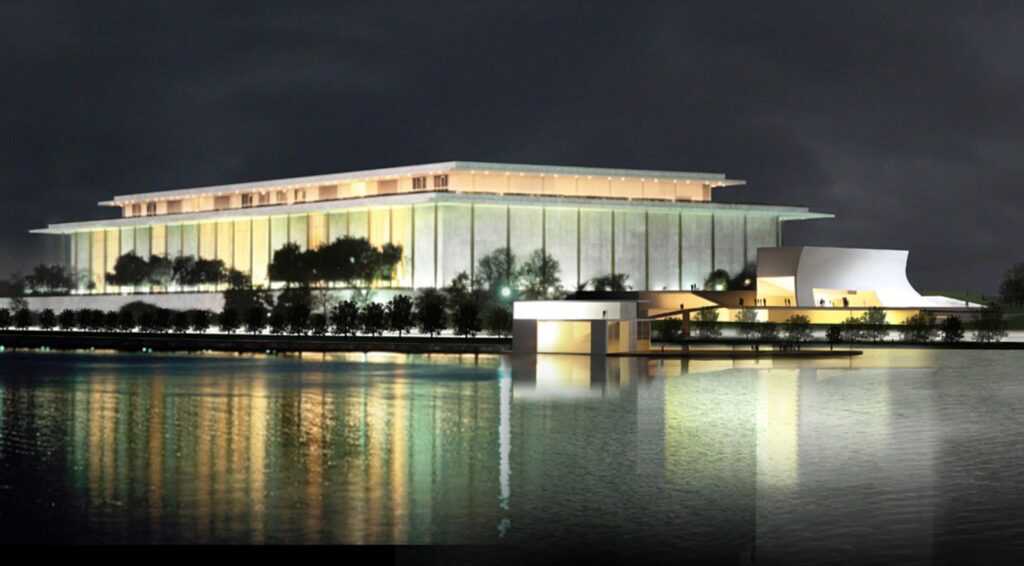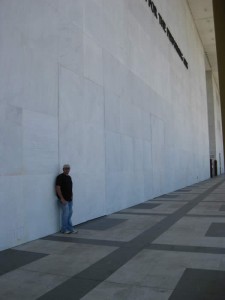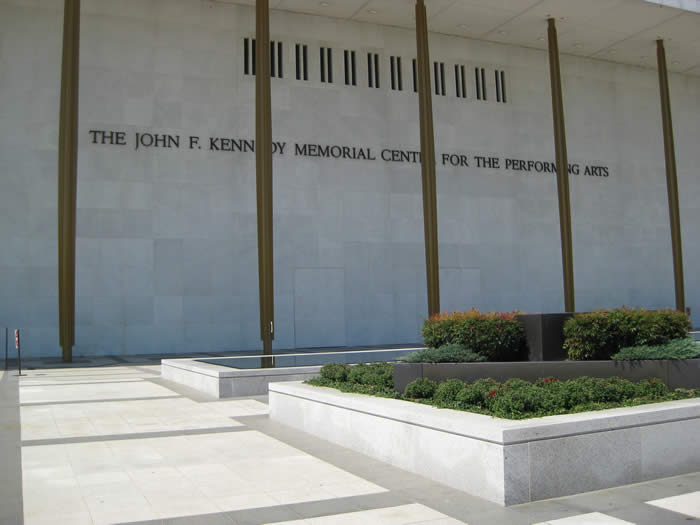
The Dream That Waited Decades
When the Kennedy Center for the Performing Arts in Washington, D.C., was built, its white Carrara marble façade, imported from Italy, was meant to symbolize elegance and timeless beauty. However, not everything matched the grandeur of the vision. The massive exterior doors, necessary for stage access and emergency exits, were left plain white, sticking out against the marble like unfinished brush strokes on a masterpiece.
For decades, the Kennedy Center lived with those stark doors—until I was commissioned by the Architect of the Capitol to change that.
An Unexpected Call and a Lifelong Dream
It was July 2008 when I got the call. The Kennedy Center needed those doors to match the marble—something they had wanted for years but could never find the right artist to accomplish. Being chosen for this project was humbling; this was a building of national significance. I knew the challenge ahead would test every bit of my skill, and I was ready.
But as with all things, nothing worth doing comes without hurdles.

The Challenges: Security, Heat, and Time
This project took place in a post-9/11 world, where security restrictions at landmarks like the Kennedy Center were heightened. I wasn’t allowed to erect tents or coverings to shield my workspace. To make things more complicated, it turned out to be one of the hottest summers on record. The heat bore down relentlessly, and I had to work under the open sky, exposed to the elements, with the sun blazing and sweat soaking through my clothes.
If that wasn’t enough, the Kennedy Center had to remain fully operational. The doors I was painting were in constant use. Emergency exits had to stay accessible, and stage crews needed regular access, meaning I couldn’t stop the flow of people around me. For someone like me, who thrives on focus and quiet, this added another layer of challenge.
But challenges can also bring moments of joy
A Race Against Time

The project was already challenging, but then came a curveball: I was told I had just 16 days to finish.
The reason? Both presidential candidates, Barack Obama and John McCain, were holding fundraisers at the Kennedy Center in August. Oprah Winfrey herself was hosting Obama’s event, while McCain’s fundraiser followed just days later. And if that wasn’t enough, in the middle of the project, Gene Upshaw, the head of the NFL Players Association, passed away, and his memorial service was scheduled at the Kennedy Center. I couldn’t paint one whole side of the building until the service concluded.
Through all this chaos, I kept my philosophy in mind:
Be 1% better than yesterday, and focus on being 1% better tomorrow.
Each day, I chipped away at the task, fighting the heat, staying centered, and delivering the best work I possibly could.
The First in History
When I finally put down the brush, those towering 12-foot doors no longer looked unfinished. They blended seamlessly with the Carrara marble, fulfilling a vision that had waited for decades. I became the first artist in history to paint those doors, transforming a functional necessity into a part of the Kennedy Center’s enduring beauty.
It was a lifelong dream realized—and proof that even the most daunting challenges can be overcome when you stay focused, disciplined, and committed to your craft.
A Dying Trade, But a Living Legacy
The lady who spoke Polish was right: this work—this art of decorative painting—is a dying trade. But as long as there are buildings to restore, stories to tell, and hands willing to create, the craft will live on.
For me, this project wasn’t just about painting doors. It was about leaving a mark—quietly, humbly, and with the care it deserved—on a piece of American history

